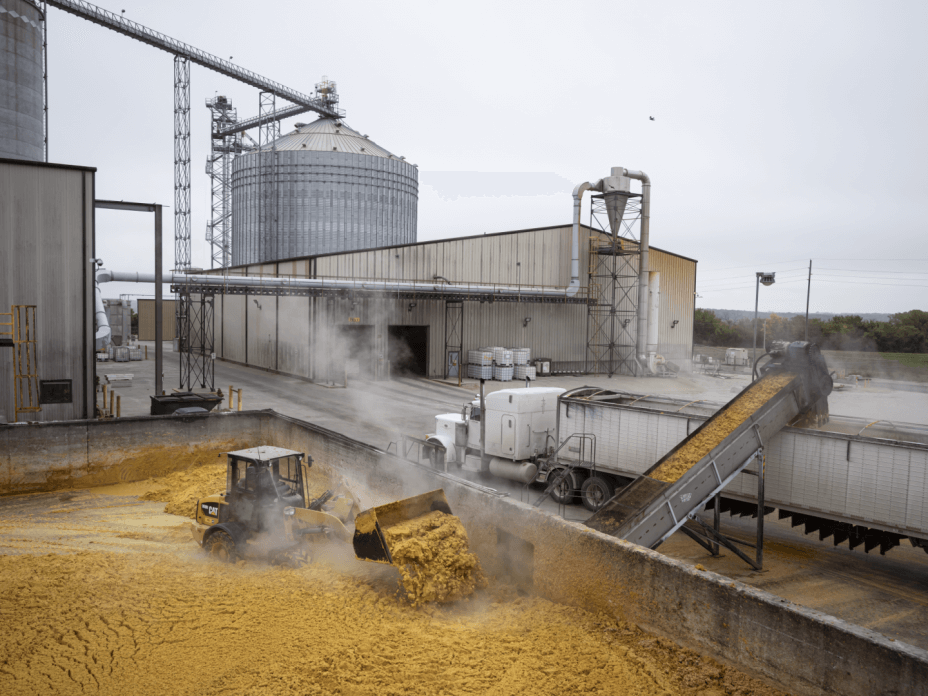Increasing recovery of distiller’s corn oil

Learning more about this important coproduct of ethanol production
Distiller’s corn oil (DCO) has a variety of uses, from being a supplement in livestock feed to acting as a feedstock for biodiesel. As DCO is the second most used feedstock in biodiesel production, its production and quality are important.
Corn oil: the coproduct being left on the table
In corn, excess energy is converted into acids, which are combined to then create corn oil. This accounts for approximately 4% of corn bushel weight. In other words, there are 1.9 pounds of theoretically available corn oil in every 56-pound bushel of corn.
Currently, the average DCO yield is just .75 pounds per bushel, meaning over 50% of corn oil goes unharvested in every bushel. For plants that primarily produce ethanol, this is a missed opportunity to get more out of their corn. There are nearly 200 corn ethanol facilities in the U.S. alone, and that means a lot of available corn oil is going to waste.
And that’s waste that could be contributing to the bottom line: In fact, for every gallon of ethanol, the production of corn oil gives facilities yields $.06 at historical prices worth $6 million dollars a year for a 100 gallon-per-year plant. This amount could also be increased, leading to even more revenue for these facilities through corn oil.
An overview of DCO recovery
In order to recover corn oil from the germ, it first must be crushed or milled out. Although being able to effectively recover oil from the germ is primarily focused on grinding, it can be made a lot more efficient with the use of an enzyme called liquefaction protease. When it was trialed, it was found that 60% of trials using liquefaction protease saw at least a 10% increase in oil yield. There is more corn oil to be recovered from the germ, and this process can help.
In corn oil recovery, decanters, tricanters, and disc stack separators are most commonly used. Although there are differences in their internal parts, they all work to separate liquids and solids to get oil:
• Decanters remove solids from stillages, resulting in a thin stillage and a wet cake. This is the first step in oil separation and the oil not captured here leaves in the wet cake and is not used.
• Tricanters are the second most used recovery system in ethanol plants. They separate liquids with different densities simultaneously.
• Disc stack separators separate solids from liquids by using a stack of discs. The denser solid or liquid moves out towards the edge of the disc while the less dense one moves towards the middle. These types of recovery systems are the most common in ethanol plants today.
What affects corn oil recovery?
There are multiple factors that affect corn oil recovery including emulsion breakers, temperature, flow pattern, pH, and others:
• Emulsion breakers are already available in corn ethanol facilities because they are used to separate oil from water. They allow oil to become larger sized droplets, causing an easier separation from water.
• Temperature helps oil separate as well because corn oil naturally has a lower density than thin stillage and forms a layer on top of the liquid, and increasing its temperature allows for easier separation.
• Flow patterns affect corn oil recovery because turbulence in the tanks can decrease oil recovered. By controlling flow patterns, more oil can be recovered.
• pH helps stabilize emulsions in water and oil. Changing the pH of a solution affects their emulsifying capacities, in turn allowing for better oil recovery. It also can help reduce damage to downstream equipment.
• Beyond these main factors, reducing both glycerol and non-hydrolyzed starch can also improve efficiency in oil recovery.
How can we help improve your corn oil recovery?
Enzymatic solutions can offer great benefits for corn oil recovery, and here at Novozymes we offer support during all phases of these solutions. We work directly with corn ethanol producers, so we are able to provide educated support throughout the process. We can also assist in making sure your equipment is running the best it can through our research in the field. Increasing your corn oil recovery will not only mean less waste but also more profit, and we are excited to help you achieve these goals.
Achieve 10% higher oil yields by focusing on liquefaction
Novozymes offers an extensive portfolio of innovative liquefaction enzyme solutions for the bioenergy industry. With the launch of Fortiva® Hemi, Novozymes brings novel enzymes to liquefaction that enable unmatched substrate conversion to deliver the highest corn oil and ethanol yields possible.
Effective across the broadest pH and temperature ranges, it’s also the most flexible liquefaction solution available to ethanol producers. Fortiva® Hemi acts upon the fiber matrix during liquefaction, creating the potential for improved fat and starch conversion leading to oil and ethanol yield previously inaccessible.
This newly freed substrate is then converted using Novozymes’ highest yielding enzyme blends to raise the bar in ethanol production efficiency, without creating undesirable sugars that can cause fouling. Plants running Hemi have seen greater than 10% corn oil yield increases and up to 1% ethanol yield increases versus their baseline liquefaction technologies.